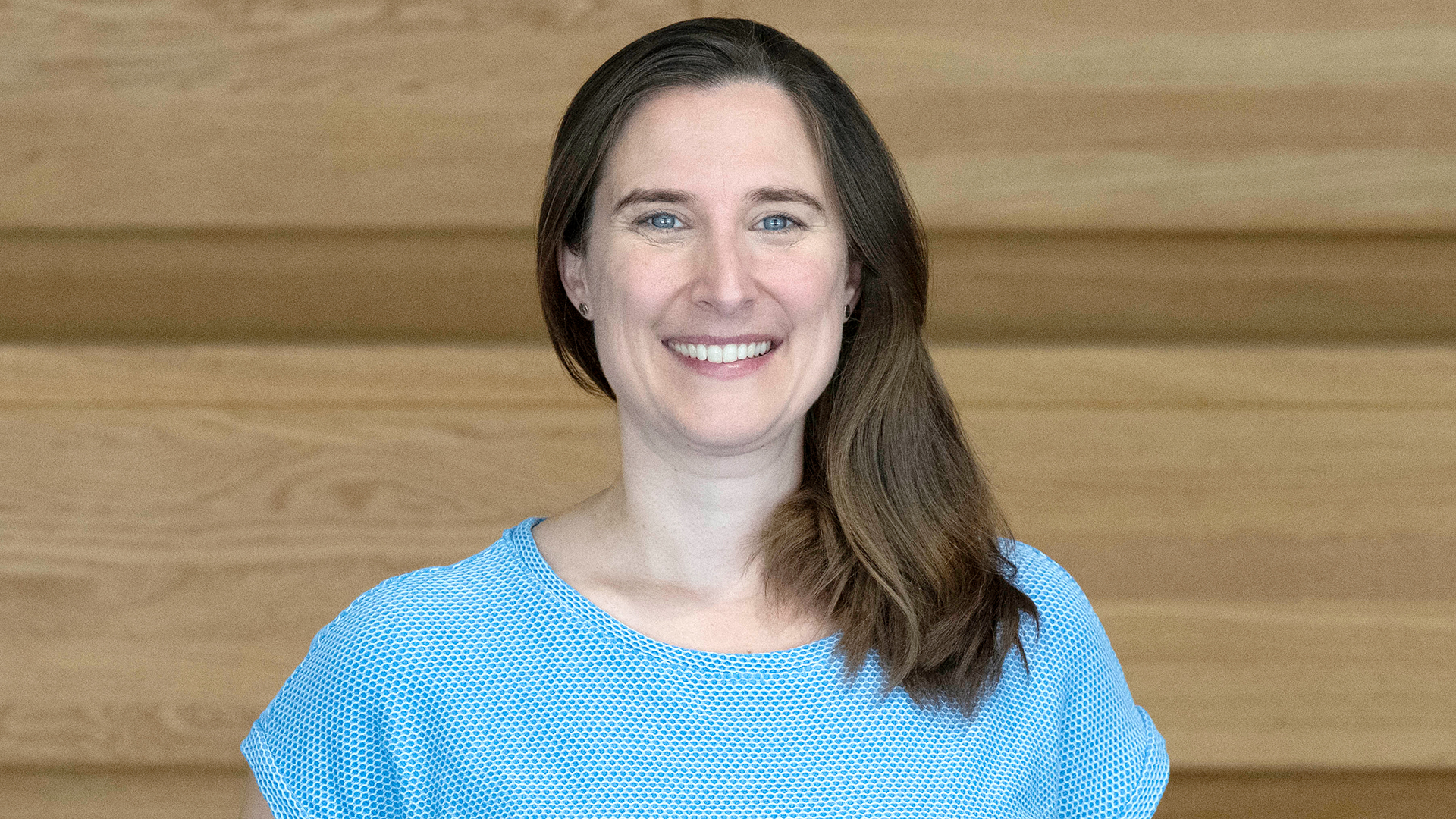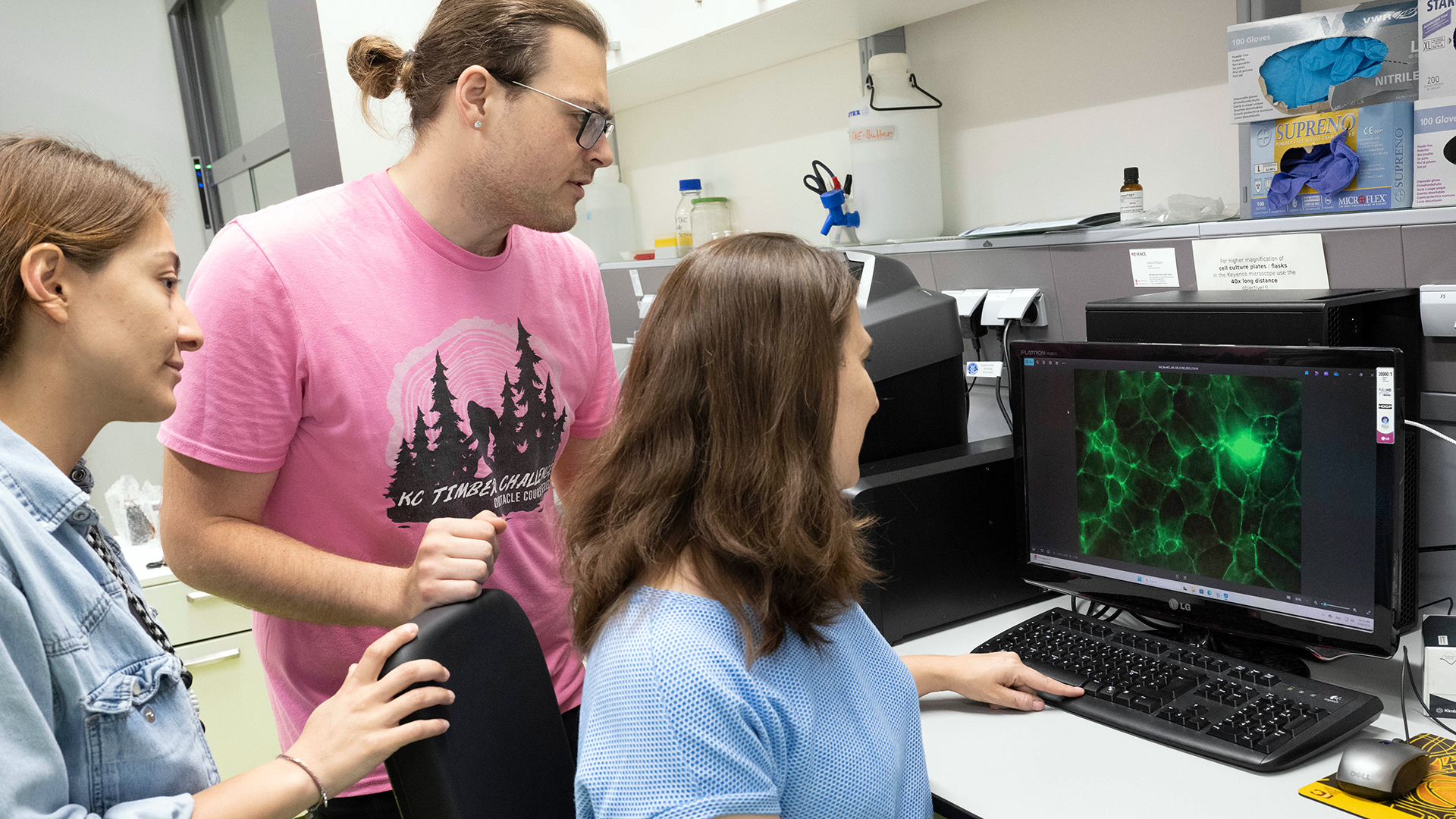11 August 2025
Tiny projections on the surface of human cells can determine whether we stay healthy or develop a genetic disorder. Professor Helen May-Simera, a cell biologist at Johannes Gutenberg University Mainz (JGU), is an expert on these hair-like structures – called cilia. Her research explores the outsized impact these tiny components can have. Her work bridges fundamental molecular science with clinical relevance, direct patient engagement, and international teaching.
A few weeks ago, Professor Helen May-Simera experienced a moment of pure joy – one that nearly brought her to tears. During a Patient Day at JGU's new BioCenter, her research group met patients living with Bardet-Biedl Syndrome (BBS), the rare genetic disorder her team studies. Doctoral researchers presented their lab projects, collected samples, and gained deep insights into the everyday lives of patients coping with symptoms such as blindness, kidney dysfunction, and obesity. "This is what I've always dreamed of – bringing research, teaching, and patients together to unravel the mechanisms behind such a complex syndrome," says May-Simera, a professor at the Institute of Molecular Physiology at JGU.

From curiosity to ciliopathies
For over 20 years, she has combined molecular cell biology with medically relevant problems – especially in the field of ciliopathies. "Cilia are tiny, hair-like extensions of the cell. They look and act a bit like antennas," she explains. "They pick up and transmit signals to and from the cell's surroundings. If their function is impaired, it can lead to serious genetic disorders like BBS." For a long time, cilia were considered functionally irrelevant – "like the appendix, but for cells" – even though they had been visible under microscopes since the 17th century, seen wiggling on single-celled organisms like paramecia. "But I have always wanted to look specifically where others haven't."
Born in England, Helen May-Simera grew up bilingual and completed the European Baccalaureate in the German section of her school. "I always knew I wanted to do something in science, but for a long time I didn't know exactly what." During her undergraduate in biochemistry at the University of Bath, everything clicked: "I realized I didn't want to become a physician, but medical research – getting to the root of diseases – was exactly what I wanted to do."
Through several internships abroad, including in Mauritius and the U.S., she studied the mechanisms of disease at the cellular level. "That confirmed my decision. I didn't want to treat symptoms; I wanted to understand the causes." After graduation, she decided to pursue a PhD in molecular biology, focusing on a topic with clinical relevance. "I simply applied to every PhD project at London universities that caught my attention."
From inner ear to eye
One offer stood out: a project with Phil Beales, a leading expert on cilia at University College London. "He was already internationally known for his work on ciliopathies, which was an emerging field at the time." His lab was among the first to develop tools to functionally analyze ciliary proteins – such as animal models that helped illuminate these rare diseases. "He promised I could work with patients, travel to the U.S. – and even get my own laptop," she adds with a laugh.
After earning her PhD in Beales's lab, where clinical and molecular aspects of cilia research were tightly interwoven, May-Simera moved to the United States for a postdoctoral position. She continued her cilia research at the renowned National Institutes of Health. Her work began with studies of the inner ear, before she moved on to the National Eye Institute. "The core question remained the same: What happens to cellular BBS proteins in disease? But in the eye, it's easier to observe and trace those changes – plus, nearly every eye cell type has cilia," she explains. In this new context, May-Simera focused once more on overlooked cell types like the retinal pigment epithelium (RPE), which lies beneath the retina's photoreceptors.
After receiving the Sofja Kovalevskaja Award from the Alexander von Humboldt Foundation, a grant worth EUR 1.65 million, May-Simera moved to Germany. "That prize launched my career. It allowed me to set up my own lab, hire staff, and work independently," she says. "Choosing Mainz as the base for my new research group was one of the best decisions of my life."

A small, collaborative field of research
"Mainz University offered me outstanding conditions. I could sense that something was taking shape here," she says. "From day one, the Faculty of Biology supported me as a junior group leader, and I quickly became part of a growing research network." Since 2021, Helen May-Simera has been a full professor at JGU and is now a member of Research Unit 5547 on cilia dynamics – the first nationwide consortium in Germany dedicated to this field, funded by the German Research Foundation (DFG). "Cilia research is a small field, but our community is close-knit, open, and highly collaborative."
May-Simera's team has already made important contributions to our understanding of cilia. They demonstrated that cilia are not just passive cellular appendages but actively participate in signal transmission – particularly within a pathway essential for cell division and embryonic development. The group also discovered that cilia can release small particles, known as extracellular vesicles, to transmit information to other cells. Currently, they are exploring how defective cilia in the retinal pigment epithelium – a previously underappreciated layer of cells in the eye – contribute to retinal degeneration.
Learning from patients
Direct exchange with patients has remained a central pillar of May-Simera's work throughout her career. "We scientists learn so much from them – about symptoms, disease progression, genetic profiles. And in turn, we want to share our research with them." She is equally committed to passing this mindset on to her students and doctoral researchers, encouraging a science culture grounded in dialog and mutual respect.
"It's crucial for young people to gain new experiences both by embracing fresh perspectives and working in different environments," she says. "Studying or conducting research abroad, seeing how other labs operate opens doors and minds." Drawing on her own international journey, she actively encourages students to take part in exchange programs. "And when they return, they're always full of motivation and ideas." That, she notes, gives fresh momentum to local research as well.
"International collaboration is simply essential for me," she emphasizes. May-Simera strategically leverages the European FORTHEM Alliance to connect and empower students across borders. "The idea is to bring together students, postdocs, and researchers working on the same topics – in our case, intercellular signaling." Within this framework, she established the Winter School on Cellular Signaling, held this year at the University of Jyväskylä in Finland, where she also teaches. In addition, she collaborates with the University of Palermo on a team-teaching initiative aimed at developing innovative formats for cross-border learning.
Science, family, and a beehive
"I love seeing students grow passionate about a particular research area," she says. International exchange, she adds, not only sparks new ideas but also strengthens diversity in both teaching and research. "A lot has changed in Mainz. We now have many more colleagues and students from international backgrounds, and numerous international Master's degree programs have been launched."
Outside the lab, May-Simera finds balance in family life – whether building imaginative Lego sets with her son or tending to her beehives. "This is my 'corona hobby' – I picked it up during the pandemic," she says with a smile. Though she modestly calls herself a poor beekeeper, she once harvested 30 kilograms of honey in a single season. Travel also plays a key role in her life – not only for research but as a shared family experience. Most recently, she spent two weeks in Uganda working with a school supported by a non-profit organization. "I ran little science experiments with the elementary kids," she recalls. "And maybe a bit of my excitement for research rubbed off on them."
Text: Anja Burkel
